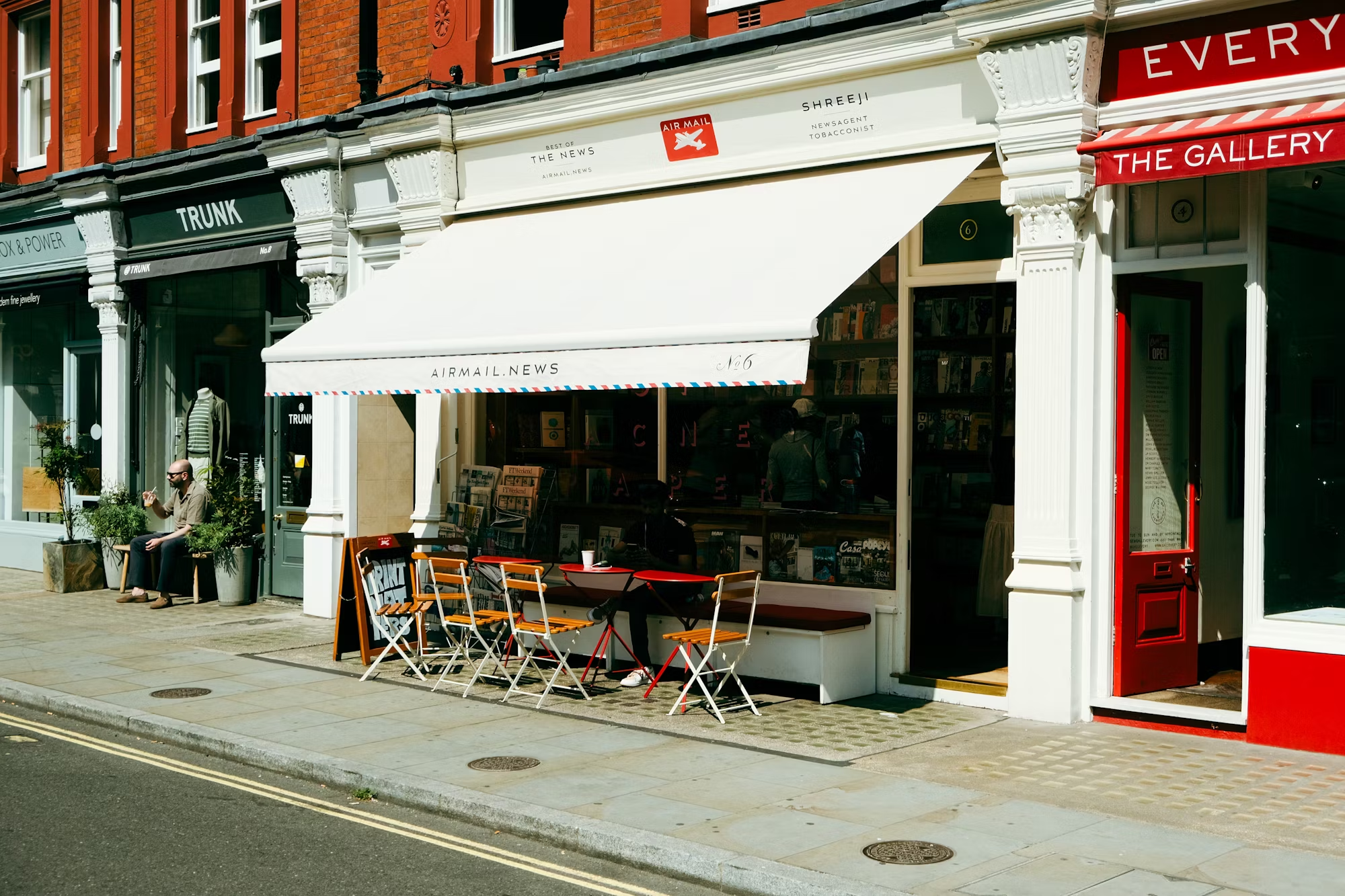The retail industry is undergoing a remarkable transformation as it adapts to the changing preferences and behaviors of consumers. As shoppers seek more personalized, engaging, and convenient experiences, retailers are leveraging technology and innovative practices to redefine the shopping journey. This article explores the trends and innovations shaping the future of retail across different types of stores, from department stores to boutiques and beyond.\n\nDepartment stores, traditionally known for their wide array of products, are reimagining their roles in the shopping experience. One significant trend is the integration of digital technology into physical stores. Many department stores are introducing interactive displays that provide customers with product information, recommendations, and promotional offers. These digital enhancements not only streamline the shopping experience but also engage customers in a more dynamic way, allowing them to explore products at their own pace.\n\nMoreover, department stores are increasingly focusing on creating experiential shopping environments. This trend involves transforming stores into immersive spaces where customers can interact with products and brands. For example, some department stores are incorporating lounges, cafes, and event spaces to encourage social interaction and provide a comfortable atmosphere for shoppers. By fostering a sense of community, these stores enhance customer loyalty and encourage repeat visits.\n\nBoutiques, known for their unique selections and personalized service, are also embracing technology to elevate the shopping experience. Many boutique owners utilize social media platforms to showcase their latest arrivals, offer styling tips, and engage with customers. This direct connection helps build brand loyalty and creates a community around the boutique’s identity. Furthermore, some boutiques are using augmented reality (AR) to allow customers to visualize products in their own spaces, making the shopping experience more interactive and enjoyable.\n\nThe rise of e-commerce has prompted boutiques to develop robust online stores, enabling them to reach a wider audience. Many are enhancing their online shopping platforms with user-friendly interfaces, high-quality images, and detailed product descriptions. Additionally, personalized marketing strategies, such as email campaigns and targeted advertisements, help boutiques connect with potential customers based on their interests and shopping history. By providing a seamless transition between in-store and online experiences, boutiques can cater to diverse shopping preferences.\n\nSpecialty stores are thriving by catering to specific consumer interests and preferences. These retailers focus on niche markets, offering curated selections that resonate with passionate shoppers. For instance, a specialty food store might focus on organic, locally sourced products, while a beauty boutique may highlight cruelty-free and sustainable brands. By emphasizing quality and expertise, specialty stores differentiate themselves from larger retailers and attract a loyal customer base.\n\nTo foster customer loyalty, many specialty stores implement rewards programs that encourage repeat purchases. These programs not only incentivize customers to shop more frequently but also create a sense of belonging. By rewarding loyal shoppers with exclusive discounts and early access to new products, specialty stores strengthen their relationships with customers and enhance overall satisfaction.\n\nThe trend of pop-up shops has gained traction as brands look for innovative ways to connect with consumers. These temporary retail spaces allow brands to create buzz around new products, test markets, and collaborate with local artists or designers. Pop-up shops often feature limited-edition items or exclusive collections, creating a sense of urgency that encourages customers to visit. This approach not only attracts foot traffic but also fosters excitement around the brand, enhancing its visibility in a crowded marketplace.\n\nE-commerce continues to play a crucial role in retail, and successful brands recognize the importance of integrating online and offline experiences. Many retailers are adopting omnichannel strategies, allowing customers to seamlessly transition between shopping methods. For example, offering services such as buy online, pick up in-store (BOPIS) caters to consumers who appreciate the convenience of online shopping while still wanting the immediate satisfaction of in-store pickup.\n\nOutlet stores are also evolving in response to changing consumer preferences. Once primarily known for offering discounted products, many outlet retailers are now focusing on quality and sustainability. By providing high-quality items at reduced prices, outlet stores appeal to budget-conscious shoppers without compromising the integrity of their offerings. This emphasis on value helps build trust and loyalty among consumers, making outlet shopping a desirable experience.\n\nChain stores, with their extensive reach and resources, are leveraging technology to enhance the shopping experience. Many chains are implementing mobile apps that provide personalized recommendations based on individual shopping habits. These apps can alert customers to promotions, offer discounts on frequently purchased items, and even suggest complementary products. By tailoring the shopping experience to individual preferences, chain stores can foster deeper connections with their customers.\n\nAdditionally, chain retailers are increasingly prioritizing customer feedback. By actively seeking input from shoppers through surveys and social media interactions, they can gain valuable insights into consumer preferences and trends. This feedback loop allows retailers to adapt their strategies and offerings in real-time, ensuring they remain aligned with customer expectations.\n\nThrift stores and secondhand shops are experiencing a resurgence as consumers seek sustainable shopping options. Many of these retailers are capitalizing on the growing trend of eco-consciousness by emphasizing the environmental benefits of buying secondhand. Social media plays a vital role in this movement, as thrift stores use platforms to showcase unique finds and share stories about the items they sell. By fostering a sense of community around sustainable shopping, these stores are attracting a new generation of shoppers who value individuality and environmental responsibility.\n\nFarmers’ markets represent a model of community engagement and sustainability, emphasizing local produce and artisanal goods. As more consumers prioritize fresh and organic products, farmers’ markets have become popular destinations for shoppers seeking high-quality food. Many markets are adopting digital platforms that facilitate online ordering, allowing customers to pre-order items for pickup. This not only enhances convenience but also ensures that farmers can sell their products efficiently and effectively.\n\nConvenience stores are also adapting to meet the demands of modern consumers. Many are expanding their product offerings to include fresh and healthy options, catering to health-conscious shoppers. Some convenience stores are implementing loyalty programs that reward customers for making healthier choices, further encouraging responsible consumption. By aligning their offerings with consumer values, convenience stores can attract a loyal customer base that appreciates their commitment to health and wellness.\n\nFlagship stores are setting new standards for retail experiences by embracing innovative designs and technologies. Many flagship locations feature interactive displays, immersive environments, and even augmented reality experiences that engage consumers in unique ways. By creating memorable shopping experiences, flagship stores can foster brand loyalty and distinguish themselves in a competitive marketplace.\n\nWarehouse clubs are also adapting to the evolving retail landscape by focusing on value and convenience. Many are implementing online shopping options that allow members to browse and purchase bulk items from home. This shift not only meets the demands of modern consumers but also aligns with the growing preference for convenience in shopping.\n\nAs the retail industry continues to evolve, it is clear that innovation and adaptability are essential for success. Retailers that embrace new technologies, prioritize customer experience, and align their offerings with consumer values will thrive in this dynamic landscape. By creating engaging and memorable shopping experiences across various store types, retailers can foster lasting connections with their customers, ensuring their continued success in an ever-changing market. The future of retail is bright for those willing to innovate and adapt to the needs of their consumers.
Related Post
This article explores the vital role of local artisans in community markets, highlighting their cont
An in-depth look at the rise of subscription services across various industries, highlighting their
An exploration of how community markets enhance local culture, support artisans, and foster social c



